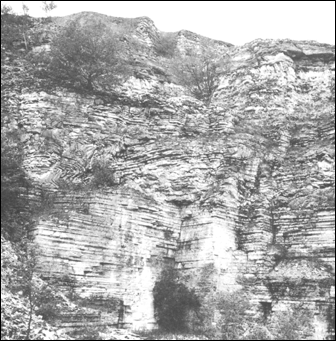
BACK TO DINOSAURS 1997 HOME PAGE
Solnhofen - Birds ARE Dinosaurs!

Outcrop at Solnhofen of the Plattenkalk.
Solnhofen
Climate
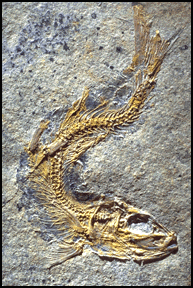 |
Environment Nearly perfectly preserved small teleost fish from Solnhofen, Bavaria. Fish is only two inches long. This preservation is typical of what occurs in bodies of water, such as the lagoons of Solnhofen, that lack oxyen at the bottom. The lack of oxygen and the lack of currents excluded scavangers and disruptive physical conditions resulting in superb preservation. Unfortunately, it is very rare for a terrestrial organism to find its way into this sort of an environment. |
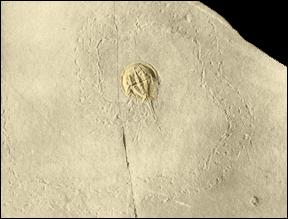
Horseshoe crab (Mesolimulus) death trail.
Saurischia
Maniraptora
|
1. three-toed foot 2. digits IV and V lost on hand 3. long arms 4. semilunate carpal 5. fused pelvis 6. large hole in lacrimal bone in skull 7. ?no unique derived characters? 8. giant, hook-like claw on digit II of pes 9. flight feathers 10. ?no unique derived characters? |
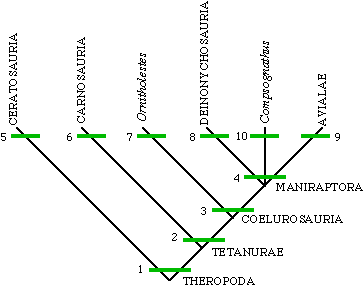 Cladogram of the Theropoda |
Aves
Archaeopteryx lithographica
Below is the Berlin specimen of Archaeopteryx from the Solnhofen Limestone. It was the third specimen found, and unquestionably the most spectacular specimen found to date. Particularly noteworthy are the very fine feather impressions, including the flight feathers of the wings. Despite its' obvious avian nature, Archaeopteryx has a hand virtually identical to other maniraptoran dinosaurs such as Velociraptor.
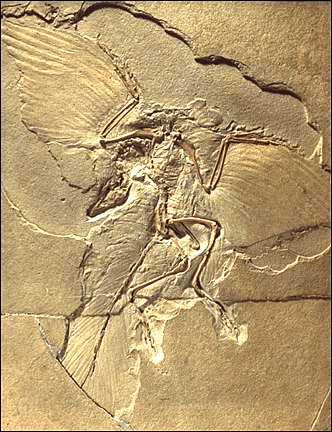
Bird and dino features